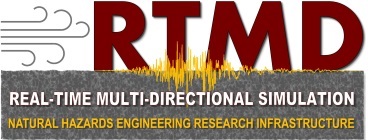Researchers probe how strong buildings must be to survive tsunamis
March 20, 2012
Clay J. Naito started to feel woozy in his ninth-floor hotel room in Japan, then quickly realized the reason: The entire building was shaking.
It was not the earthquake that unleashed a deadly tsunami a year ago on March 11 – a surge of water that topped 60 feet in places – but a much smaller quake a few months later. Still, it rattled him, because he is a civil engineer and knows how a building can succumb to the might of the trembling earth.
“For me, it’s worse than most people,” said Naito, an associate professor at Lehigh University. “I know what can go wrong.”
Naito was in Japan with a team researching how strong a building must be to withstand the destructive potential of a tsunami.
The forces from floodwaters alone are bad enough, but as Japan learned last year, a tsunami can pick up trucks, shipping containers, and even houses in its wake, slamming them into buildings where people have sought refuge.
Having surveyed the damage during their visit to Japan in June, Naito and his partners now are trying to re-create tsunami-like conditions in the lab.
At Lehigh, in a cavernous testing center that once was a Bethlehem Steel warehouse, engineers have suspended a 20-foot shipping container from sturdy cables. They use a hydraulic winch to pull it back and let it go, like a battering ram, to measure the resulting forces.
This summer, Naito’s collaborators at Oregon State University plan to conduct more tests in water, in a wave pool longer than a football field. They will use scale models of shipping containers, measuring one-fifth normal size. Both studies will be used to tweak sophisticated computer models.
Click Here to watch a clip from Discovery Channel’s one year later coverage of the tsunami in Japan which showcases the container testing at Lehigh University.
Read more: http://www.philly.com/philly/health/20120312_Researchers_probe_how_strong_buildings_must_be_to_survive_tsunamis.html#ixzz1pgLWYsOd
Source: Tom Avril, Philly.com


